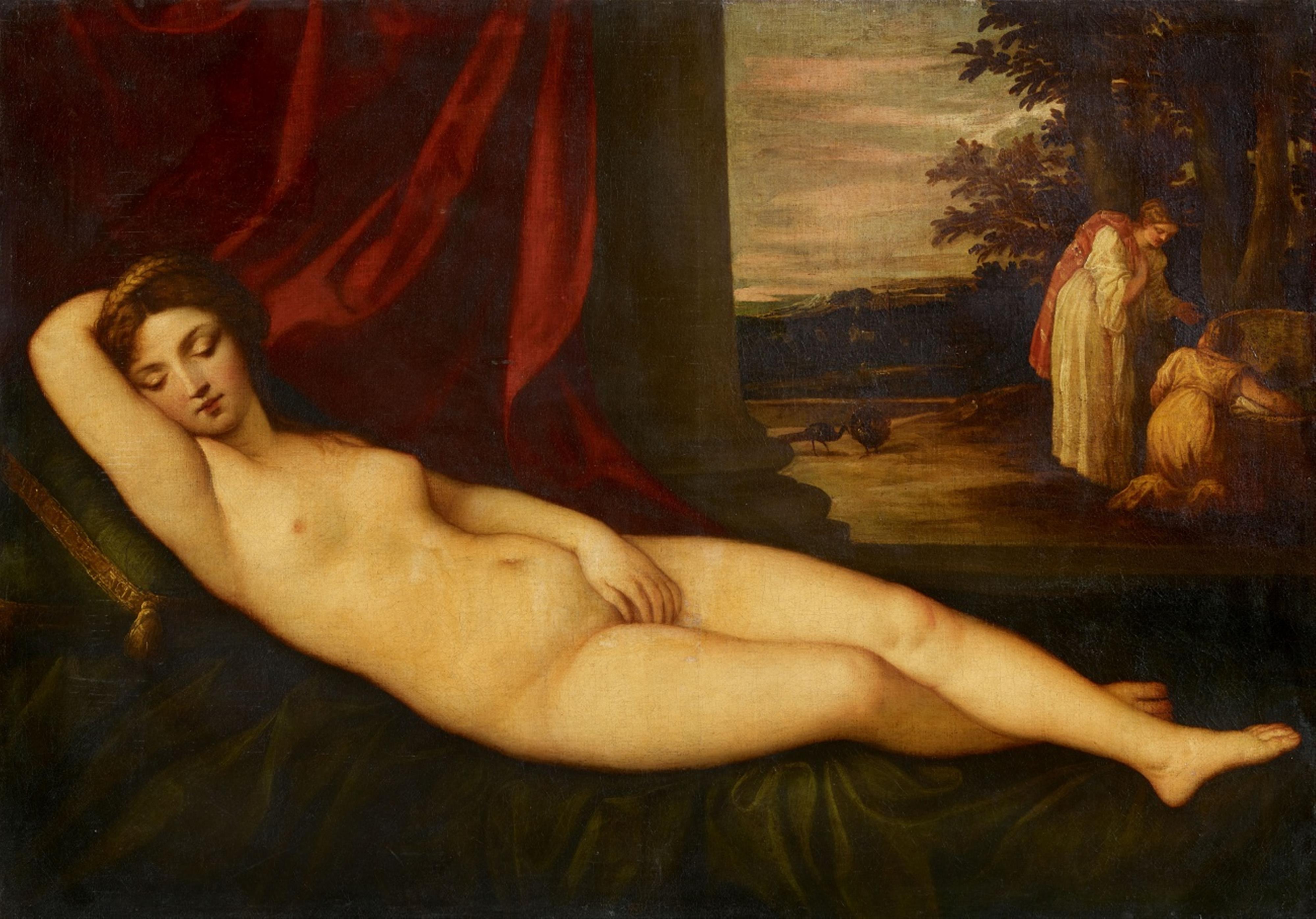Alessandro Varotari, called Il Padovanino
Recumbent Venus
Oil on canvas (relined). 94 x 134.5 cm.
This reclining Venus by Padovanino is a homage to the the two most important nude depictions of the Venetian Cinquecento: Giorgione's 'Sleeping Venus' from 1507 (Gemäldegalerie Alte Meister, Dresden) and Titian's 'Venus of Urbino' from 1538 (Galleria degli Uffizi, Florence). Padovanino appropriated and fused both these works into one picture: he transferred the figure of Giorgione's sleeping Venus to the inside of a palace, which in itself is reminiscent of Titian's work. On the left hand side a red curtain frames the upper body of Venus, whilst the right opens onto a broad landscape, in which two females on a coffer are seen.
Padovanino's work is particularly interesting in respect of the historical reception of Giorgione's 'Sleeping Venus'. The painting had been in the collection of Girolamo Marcello in Venice since the 16th century, where it was seen by Marcantonio Michiel in 1525 and who wrote: ' ...the picture with the naked Venus, sleeping in a landscape, with Cupid, was from the hand of Zorzo da Castelfranco, but the landscape and Cupido were completed by Titian ( ...fo de mano de Zorzo da Castelfranco; ma lo paese et Cupidine forono finiti da Titiano)'. The painting remained in the Casa Marcello into the late 17th century where it was viewed by the art critics Carlo Ridolfi (1648) and Marco Boschini (1660) - and where it was also admired by Padovanino.
Padovanino did without Titian's cupid, as described by Michiel and Ridolfi, and which became victim to a restorer in the 19th century - perhaps in order to position the female figures in the background, which otherwise would have been concealed by the cupid. Perhaps also, however, so as not to distract from the softly flowing figure of Venus with childlike additional figures. Paris Bordone had already experimented portraying Titian inspired depictions of Venus with and without cupid in the 16th century, resulting in a playful and 'purist' version.
As well as his own work, in which he sought to link himself to the great Venetian painting of the Cinquecento, Padovanino also made copies of Titian's works. At the time, the heritage of classical Venetian art of the 16th century was still much alive, and the artworks of this epoch omnipresent in the churches and palaces of Venice and the terraferma. Padovanino served the great demand for classical Venetian art with his new creations and new interpretations such as this 'Reclining Venus'.
Provenance
Probably at one time in the collection of the Earl of Arundel, Howard Castle – Legatt Brohers, London, 1929 – Art dealer Paul Rusch, Dresden. – Acquired there by Hermann Göring, 12.8.1942 (for 18,000 RM) – Central Collecting Point, Munich No. 7120 (6.8.1945). – Transferred to the trusteeship of the Bavarian Prime minister in person to the Director General of the Bavarian State painting collection Munich. - The Bavarian State painting collection, Munich. – Auctioned on behalf of the Bavarian Free State at Weinmüller, Munich, 2,12,1966, lot 1381. – Private collection, Oxford. – German private collection.

